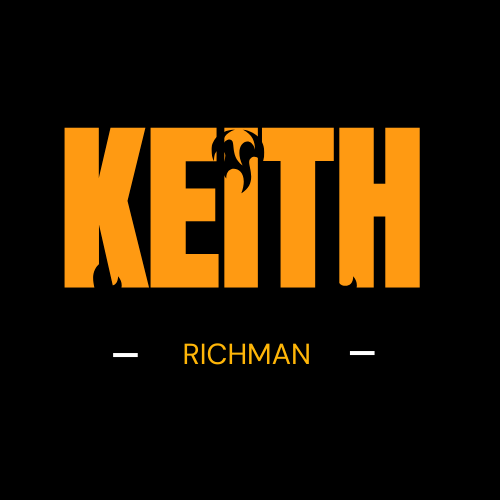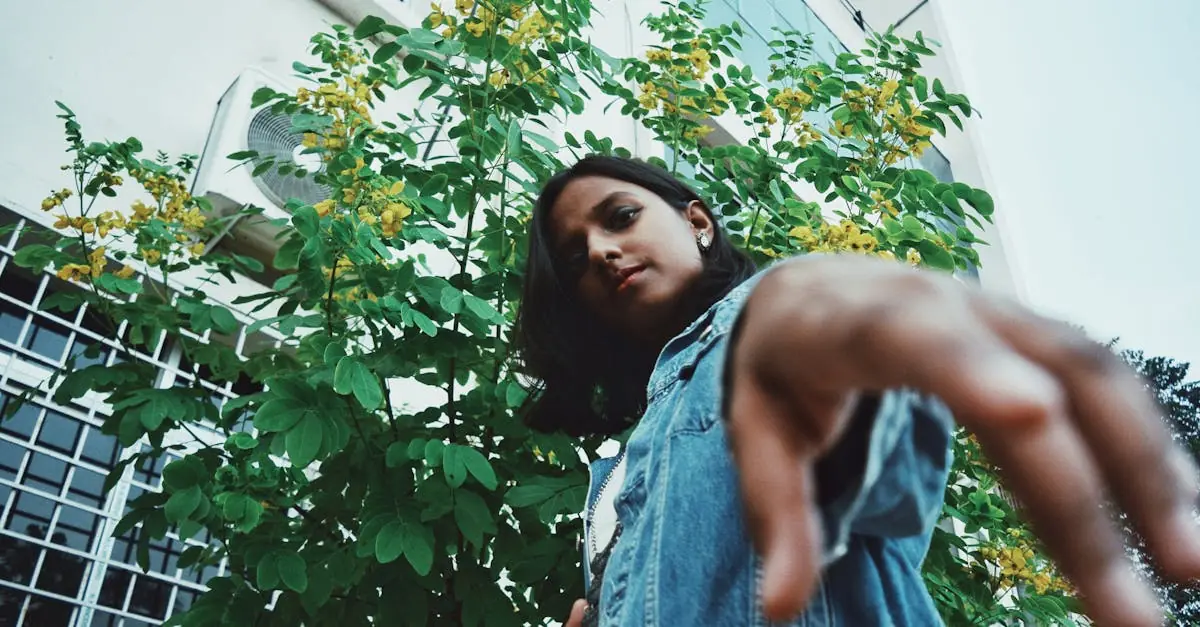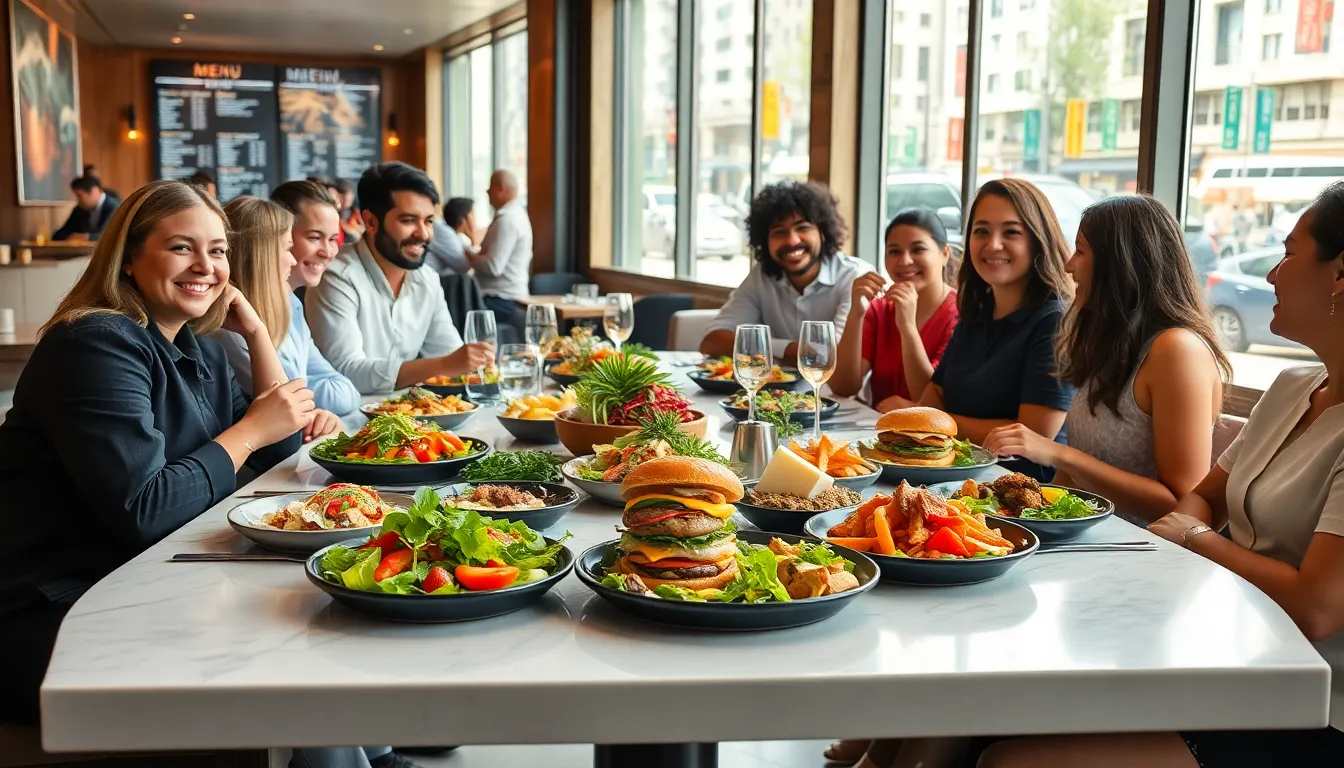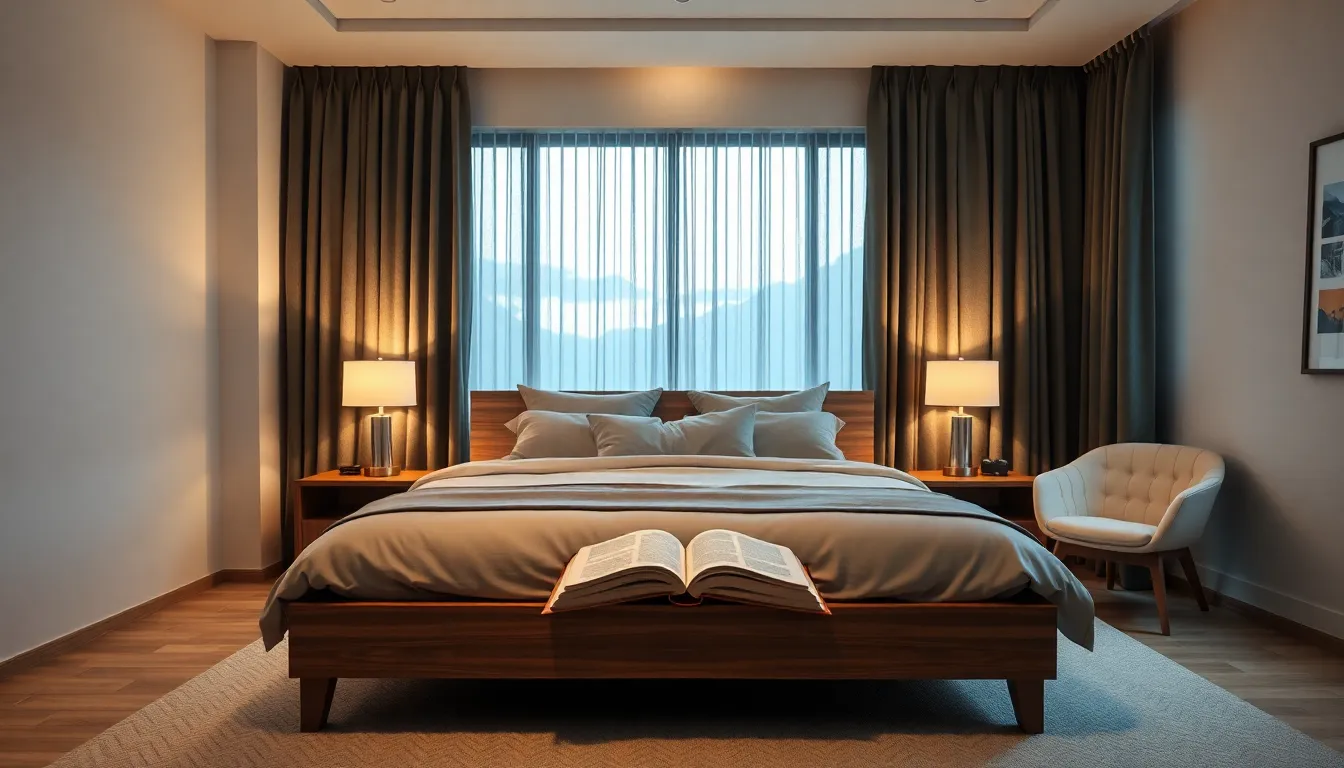Table of Contents
ToggleFashion is all about making statements, and what better way to stand out than by mastering the art of contrast? Picture this: a bold, vibrant outfit that catches the eye and sparks conversation. But hold on—before diving into the deep end of color and pattern, it’s essential to understand the rules of fashion contrast.
Understanding Fashion Contrast Rules
Understanding the rules of fashion contrast is essential for creating visually appealing outfits. Contrast can involve colors, patterns, textures, or silhouettes, and it plays a crucial role in outfit effectiveness.
Colors can be complementary or contrasting, depending on the desired effect. Complementary colors, which sit opposite each other on the color wheel, create harmony in an outfit. For instance, blue pairs nicely with orange. Contrasting colors, like black and white, produce striking, eye-catching visual impacts.
Patterns also contribute to contrast. Mixing patterns demands careful attention to scale and proportion. Small prints often work well with larger ones, as long as they share a common color palette. This technique can create depth while maintaining coherence.
Texture adds another layer to contrast. Combining smooth fabrics with rougher ones can enhance the visual interest of an outfit. For example, pairing silk with denim introduces a dynamic look.
Silhouette contrast stands out in fashion as well. Oversized garments paired with fitted pieces create balance. For instance, a fitted turtleneck looks great under a voluminous coat.
Simple guidelines exist for using contrast effectively. Use contrasting elements to draw attention to specific areas of the body, ensuring the focus remains balanced. Staying aware of personal style preferences also ensures comfort and confidence when experimenting with bold contrasts.
Following these rules simplifies the process of applying contrasting elements in fashion. They provide a framework that helps individuals confidently explore this dynamic aspect of their wardrobe.
Importance of Contrast in Fashion
Contrast plays a crucial role in fashion, enhancing visual appeal and making outfits stand out. By manipulating colors, patterns, textures, and silhouettes, individuals can create engaging looks that capture attention.
Visual Impact
Colors can profoundly influence perceptions. Complementary colors, which oppose each other on the color wheel, create visually striking combinations. For example, pairing a vibrant orange with a deep blue offers a bold impression. Patterns also contribute to visual dynamics. Mixing large prints with smaller ones not only adds interest but also maintains coherence, particularly when a shared color palette exists. Texture enhances overall aesthetics as well. Combining smooth fabrics with rugged ones generates depth, making an outfit more captivating.
Expressing Individuality
Fashion contrasts provide an opportunity for personal expression. Unique combinations reflect individual styles and preferences. By experimenting with contrasting elements, such as pairing a fitted top with wide-legged pants, individuals can reveal their personality through their attire. Utilizing unexpected color pairings or diverse textures fosters creativity and facilitates distinctive looks that resonate with personal tastes. Each outfit becomes a canvas showcasing individual flair while adhering to fashion principles.
Types of Fashion Contrast
Fashion contrast includes various elements like color, texture, and pattern. Each type plays a vital role in creating compelling outfits.
Color Contrast
Color contrast involves combining hues that differ significantly on the color wheel. It typically enhances visual interest and draws attention. For instance, pairing vibrant orange with deep blue makes a bold statement. Complementary colors offer harmony, while clashing colors elevate visual impact. One popular choice is pairing light pastel shades with darker, rich tones for depth. When using color contrast, consider personal skin tones and preferences to create a polished look.
Texture Contrast
Texture contrast creates depth by combining materials with varying textures. It evokes a sense of tactile appeal. Smooth silks alongside rugged denim often result in striking outfits. Mixing materials like leather with softer fabrics, such as knits, adds richness to any ensemble. Layering textured garments can also provide a multidimensional effect. Individuals often experiment with contrast in texture to enhance their outfits while enjoying the comfort of unique materials.
Pattern Contrast
Pattern contrast requires careful attention to scale and proportion for visually appealing results. Pairing large prints with smaller ones can create a balanced look, especially if they share a common color palette. Stripes with florals often form captivating combinations. Maintaining an awareness of overall outfit cohesion helps avoid overwhelming visuals. A well-mixed pattern outfit showcases personal style while communicating confidence and creativity.
How to Apply Fashion Contrast Rules
Understanding how to apply fashion contrast rules enhances the ability to create stunning, eye-catching outfits. Several techniques aid in effectively combining contrasting elements.
Combining Colors Effectively
Complementary colors create dynamic visual appeal. For instance, matching vibrant orange with deep blue sparks a lively contrast. Neutrals serve as excellent anchors, balancing bold colors. Mixing warm and cool shades adds depth to an ensemble, allowing for personal expression. Always consider the size of the color blocks as well; larger expanses of color often amplify impact, while smaller accents can provide subtle interest.
Balancing Textures
Textures contribute richness to an outfit. Pairing smooth materials, like silk, with rough textures, such as denim, creates a visual and tactile contrast. Layering different fabrics elevates style, emphasizing certain elements. Opt for combinations that create harmony; for example, a chunky knit sweater pairs well with sleek leather pants. Being mindful of the overall weight of materials ensures a balanced look throughout.
Mixing Patterns with Confidence
Pattern mixing requires strategic choices for cohesiveness. Pairing large prints with small ones often leads to striking outcomes, especially when they share a color palette. Think florals with stripes or polka dots, emphasizing different scales. Consistent color across varied patterns ties the ensemble together, maintaining focus. Confidence in pattern mixing emerges through practice; experimenting fosters a unique style that stands out.
Common Mistakes to Avoid
Choosing clashing colors is a frequent error in fashion contrast. Bright hues may overwhelm when paired improperly, making an outfit look chaotic. Misjudging the scale of patterns often leads to unbalanced looks. Small prints can get lost next to large designs, disrupting visual harmony.
Ignoring the importance of texture is another mistake. Mixing similar textures can create a flat appearance. Using a combination of smooth and rough materials enhances depth and interest. Overloading on contrasting elements can also lead to confusion in a look. Striving for balance ensures that no single element dominates.
Neglecting personal style preferences is a common pitfall. Individuals should focus on what makes them feel comfortable and confident. Outfits should express unique styles rather than adhere strictly to rules. Sticking solely to trends without individual adaptation often diminishes authenticity.
Lastly, failing to consider silhouette contrast greatly impacts an outfit’s success. Pairing oversized garments with fitted pieces creates balance. Without this consideration, silhouettes can clash, resulting in an unflattering look. Emphasizing harmony between varied elements leads to timeless fashion statements.
Being aware of these common mistakes helps navigate the complexities of fashion contrast. Understanding these factors creates opportunities for personal expression, allowing individuals to develop polished and cohesive outfits.
Embracing fashion contrast opens the door to creativity and self-expression. By mastering the rules of color, texture, pattern, and silhouette, individuals can craft outfits that not only capture attention but also reflect their unique personalities.
Experimenting with contrasting elements allows for a playful exploration of style. It’s about finding the right balance and ensuring comfort while making bold statements. With an understanding of these principles, anyone can elevate their wardrobe and stand out in a crowd.
Ultimately, fashion contrast is more than just a trend; it’s a powerful tool for showcasing individuality and confidence.







